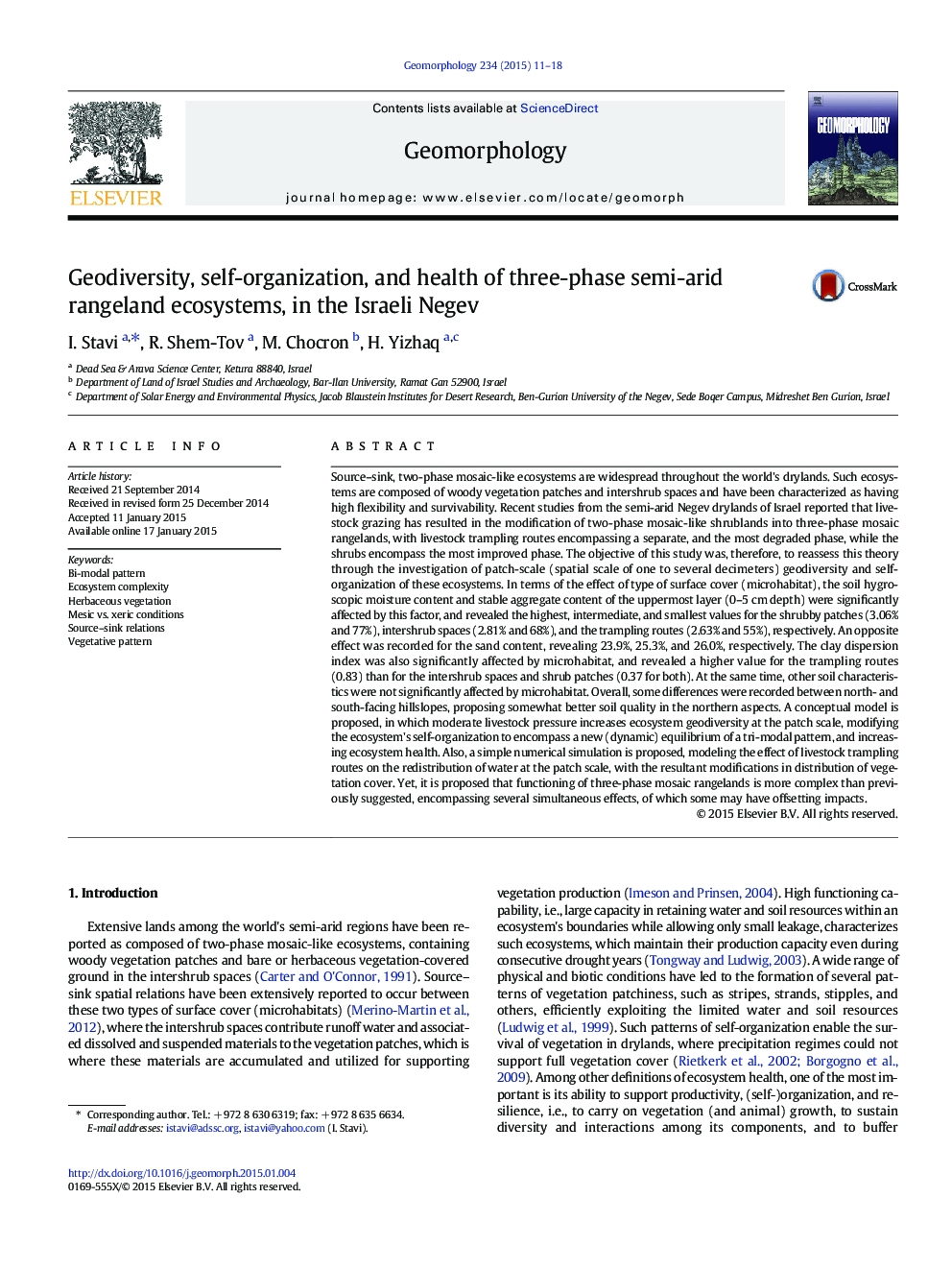| کد مقاله | کد نشریه | سال انتشار | مقاله انگلیسی | نسخه تمام متن |
|---|---|---|---|---|
| 6432177 | 1635415 | 2015 | 8 صفحه PDF | دانلود رایگان |

- Livestock grazing modifies two-phase mosaic-like ecosystems to three phase rangelands.
- Livestock trampling routes act as optimal source areas for water and soil resources.
- Patch-scale geodiversity is linked to the spatial distribution of vegetation cover.
- Livestock-imposed greater geodiversity increases redistribution of soil resources.
- Livestock-modified geodiversity impacts ecosystem self-organization and health.
Source-sink, two-phase mosaic-like ecosystems are widespread throughout the world's drylands. Such ecosystems are composed of woody vegetation patches and intershrub spaces and have been characterized as having high flexibility and survivability. Recent studies from the semi-arid Negev drylands of Israel reported that livestock grazing has resulted in the modification of two-phase mosaic-like shrublands into three-phase mosaic rangelands, with livestock trampling routes encompassing a separate, and the most degraded phase, while the shrubs encompass the most improved phase. The objective of this study was, therefore, to reassess this theory through the investigation of patch-scale (spatial scale of one to several decimeters) geodiversity and self-organization of these ecosystems. In terms of the effect of type of surface cover (microhabitat), the soil hygroscopic moisture content and stable aggregate content of the uppermost layer (0-5Â cm depth) were significantly affected by this factor, and revealed the highest, intermediate, and smallest values for the shrubby patches (3.06% and 77%), intershrub spaces (2.81% and 68%), and the trampling routes (2.63% and 55%), respectively. An opposite effect was recorded for the sand content, revealing 23.9%, 25.3%, and 26.0%, respectively. The clay dispersion index was also significantly affected by microhabitat, and revealed a higher value for the trampling routes (0.83) than for the intershrub spaces and shrub patches (0.37 for both). At the same time, other soil characteristics were not significantly affected by microhabitat. Overall, some differences were recorded between north- and south-facing hillslopes, proposing somewhat better soil quality in the northern aspects. A conceptual model is proposed, in which moderate livestock pressure increases ecosystem geodiversity at the patch scale, modifying the ecosystem's self-organization to encompass a new (dynamic) equilibrium of a tri-modal pattern, and increasing ecosystem health. Also, a simple numerical simulation is proposed, modeling the effect of livestock trampling routes on the redistribution of water at the patch scale, with the resultant modifications in distribution of vegetation cover. Yet, it is proposed that functioning of three-phase mosaic rangelands is more complex than previously suggested, encompassing several simultaneous effects, of which some may have offsetting impacts.
Journal: Geomorphology - Volume 234, 1 April 2015, Pages 11-18